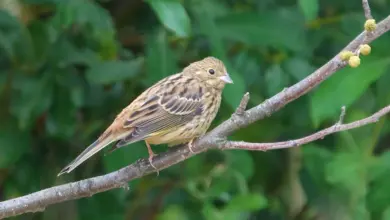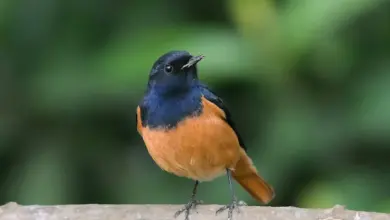Black-winged Stilts aka Pied Stilts
The Black-winged Stilts (Himantopus himantopus) – also known as Common Stilts or Pied Stilts – are globally widespread wading birds.
They are found across Asia, Africa, Europe and the United States covering about 12,000,000 square miles (or 31,000,000 square kilometers). Their global population estimate for 2009 ranged between 450,000 and 780,000 individuals.
These birds are most easily recognized by their distinctive jet-black wings and their very long, reddish legs that account for nearly 60 percent of their height.
Their maximum lifespan is about 20 years.
Habitat / Migration Patterns
Typical Habitat
The Black-winged Stilts are most commonly observed on the shores of large, inland water bodies and estuarine or coastal habitats, including coastal lagoons, river deltas, swamps, marshes, flooded fields, fish and sewage ponds, as well as shallow pools with areas of mudflats,
Breeding birds are usually seen in small groups. Outside the breeding season, or during the migration, these social birds form larger flocks.
Migration
Both sedentary (non-migratory) and migratory populations exist.
Those found in temperate climates are often resident, except for local movements in response to availability of food.
Those breeding in northern regions migrate over long distances to reach their southern wintering grounds; or they may move towards the coasts.
Southwards migrations typically occur between August and November; and they return to their breeding territories between March and April. These waders generally migrate in large flocks of several hundreds or even thousands.
Status
The Black-winged Stilts are legally protected under the Agreement on the Conservation of African-Eurasian Migratory Waterbirds (AEWA), which prohibits harassing, harming, pursuing, hunting, shooting, wounding, killing, trapping, capturing or collecting listed species.
Subspecies and Ranges:
The taxonomy of this species is somewhat convoluted. Some separate them as different species, others lump them together. Depending on the source, 2 up to 5 forms are recognized:
Nominate Forms
- Black-winged Stilt (Himantopus [himantopus] himantopus – Linnaeus, 1758)
- Range: Warmer parts of southern and western Europe and the Mediterranean region, south to northern Africa and Madagascar, and east to central and southern Asia and north central China, Indian Subcontinent, Indochina and Taiwan.
- ID: Neck and head variable – ranging from all white to white with a black cap and hindneck. There usually is a white band across the upper back.
Pied Forms
- White-headed Stilt (Himantopus [himantopus] leucocephalus – Gould, 1837)
- Range: Southeastern Indonesia – from Java east to New Guinea, and south to Australia and New Zealand. Travel north to winter in the Philippines, Greater Sundas and Sulawesi.
- ID: All white head and neck. Black behind. Open black chest band and most have a white band across the upper back.
Black-necked Forms
- Hawaiian Stilt or ae`o (Himantopus [himantopus] knudsenior Himantopus mexicanus knudseni – Stejneger, 1887) Sometimes considered a full species
- Range: Hawaiian Islands (where it is the only breeding shorebird)
- Status: Rare and endangered due to habitat destruction. Fewer than 2,000 are believed to have survived.
- ID: More extensive black markings on the neck and head than those found in ssp. mexicanus – with the black typically extending below the eyes.
- Black-necked Stilt (Himantopus [himantopus] mexicanus – Statius Müller, PL, 1776) / Sometimes considered a full species
- Range: Western and southern USA through Central America and Caribbean to eastern Ecuador, southwestern Peru, and northeastern Brazil
- ID: White head and neck with black cap down to the eyeline. White spot above each eye. No white band across upper back. Black hindneck.
- White-backed Stilt (Himantopus [himantopus] melanurus or Himantopus mexicanus melanurus – Vieillot, 1817) / Sometimes considered a full species
- Range: South America – from northern Chile and east-central Peru through Bolivia and Paraguay to southeastern Brazil, and south to south to central Argentina.
- ID: Larger than ssp. mexicanus; most have white crowns. Black line from the eye to the nape. Most have white bands across the upper backs.
Description
Size
Height: 13 – 17 inches (~ 33 – 43 cm)
Wingspan: 27 – 28 inches (68 – 71 cm)
Weight: 4.8 – 7.8 oz (136 – 220 g)
Plumage Details / Adults
Black and white plumage with regional and seasonal variations. Most are blackish above and white below.
Males have black backs with some greenish iridescence.
Females have brownish backs with black flight feathers. Females typically have less black on the head and neck.
Other Physical Details
- Very long pinkish / reddish legs with partially webbed feet
- Long, slender, black bill that curves slightly upward.
Juvenile Description
In immature birds, the markings that are black in adults are mostly grey. They may have some dark feathers on the white head.
Downy young are mostly light olive brown, paler below. On the wings and the back, they have vertical rows of black speckles that are larger towards the back.
Diet / Feeding
Black-winged Stilts feed on flying and aquatic insects, molluscs,crawfish, tadpoles, crustaceans, spiders, oligochaete and polychaete worms, tadpoles, small fish, fish eggs, beetles, and, occasionally, they will take seeds.
Foraging is mostly down in shallow waters and their long legs allow them to wade into deeper water, giving them a feeding advantage over other waders.
Insects are often taken from the water’s surface; for fish they will dip their heads into the water to catch them; and they pull worms from the mud.
Breeding / Nesting
Breeding birds form strong, monogamous pair bonds. Both participate in constructing the nests, incubating the eggs and raising the young. They generally breed in marshes, shallow lakes and ponds.
The nests are either bare depressions on the ground near water or they are placed on floating vegetation. They either nest solitary or in loose breeding colonies of two up to several hundreds of pairs.
Calls / Vocalizations / Sounds
https://www.xeno-canto.org/embed.php?XC=155092&simple=1
Alternate (Global) Names
Afrikaans: Rooipootelsie … Albanian: Kalorësi … Arabic: ???????, ??????? ????????, ??????? ???????? ?????, ??????? ??? ?????, ????? … Armenian: ?????????? … Asturian: Cigoñina … Azerbaijani: Çaydaq cüllütü … Basque: Cames llargues, Zankaluze … Belarusian: ?????????? … Bulgarian: ??????????? … Breton: Ar skaseg kof gwenn … Catalan: Avisador, Cames llargues, Remena-rocs … Chinese: ???, ?????, ????? … Cornish: Cornwhylen carrek … Croatian: Crvenonoga vlastelica, Vlastelica … Czech: Pisila cáponohá … Danish: Stylteløber … Dutch: Stelkluut … Estonian: Karkjalg … Finnish: Pitkäjalka … French: Échasse à manteau noir, Échasse blanche … Frisian: Steltklút … German: Eurasiatische Stelzenläufer, Stelzenläufer … Georgian: ??????? … Greek: ??????????? … Irish: Scadalach Dhubheiteach … Hebrew: ?????? … Hindi: Pavazha kaal ullan … Hungarian: Gólyatöcs … Icelandic: Háleggur … Italian: Cavaliere d’Italia / eurasiatico …Japanese: Ashinaga-shigi, Seitaka-shigi … Korean: ?????? … Lithuanian: Koj?kas … Malagasy: Tafaly, Takapaly, Tsakaranta … Maldivian: Theyravaa Ilolhi … Maori: kaki … Mongolian: ????? ??????? … Norwegian: Stylteløper … Polish: Szczud?ak zwyczajny … Portuguese: maçaricão, maçaricão-de-pernas-longas, Macarico pernilongo, Maçarico-de-perna-longa, Macarico-pernilongo, perna longa, Perna longa., pernalonga, Perna-longa, Perna-longa., pernalonga-comum, pernilonga, Pernilongo, pernilongo-de-costas-negras, Vira-pedras … Romansh: gambun pitschen … Russian: ?????????? … Sardinian: Zurruleu, Zurruvigu … Scots: Luigneach … Slovak: Éišila bocianovitá, Šišila bocianovítá … Slovenian: polojnik … Serbian: dugonogi prudnik, Vlastelica, ?????????? … Spanish: Cigueñuela, Cigüeñuela Común, Cigüeñuela de Alas Negras, Playerito zancudo … Swedish: Styltlöpare … Swahili: Msese Milonjo … Thai: ?????????? … Turkish: Uzunbacak … Tuvinian: ?????-??????? ??? … Ukrainian: ????????, ?????-???????? … Vietnamese: Cà kheo




